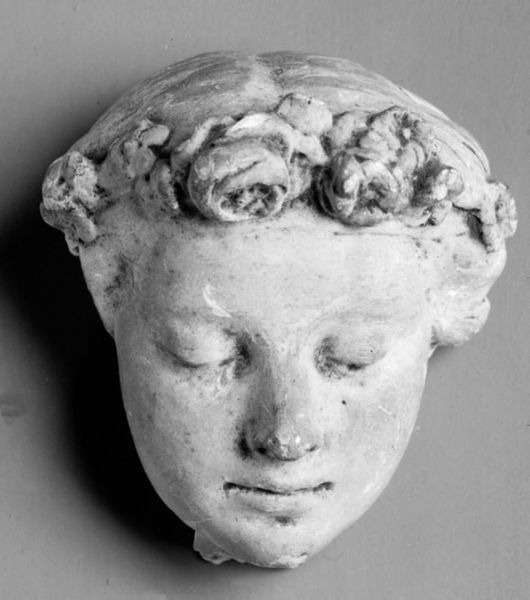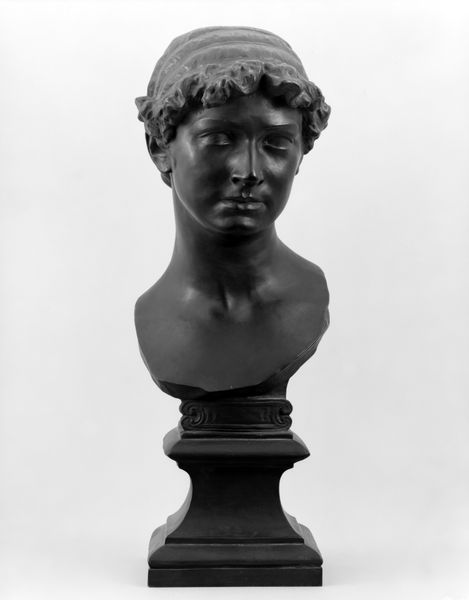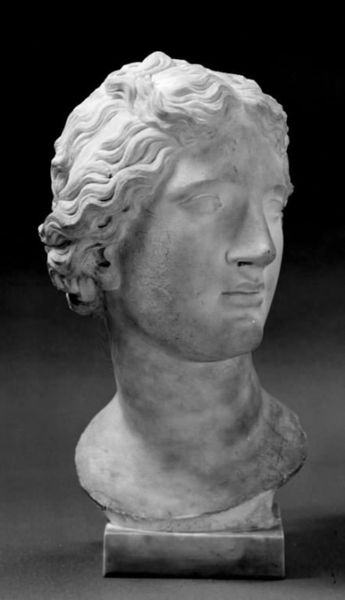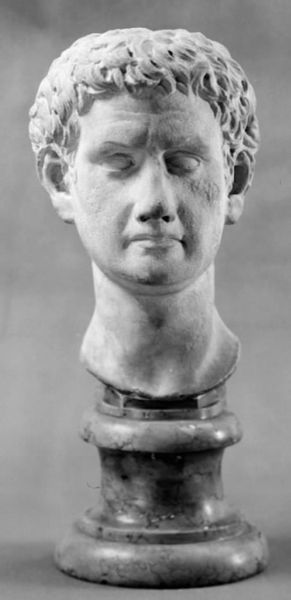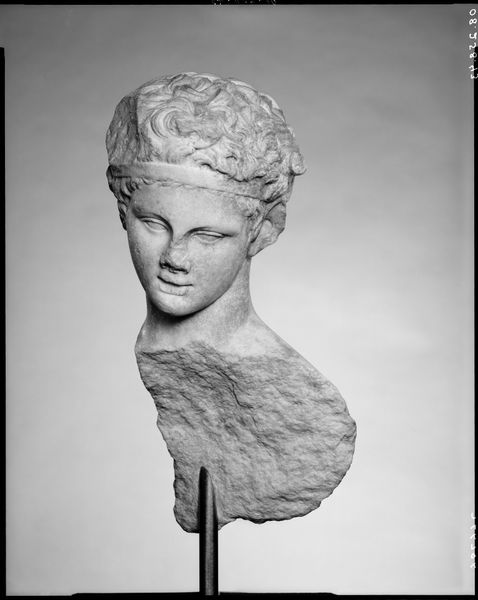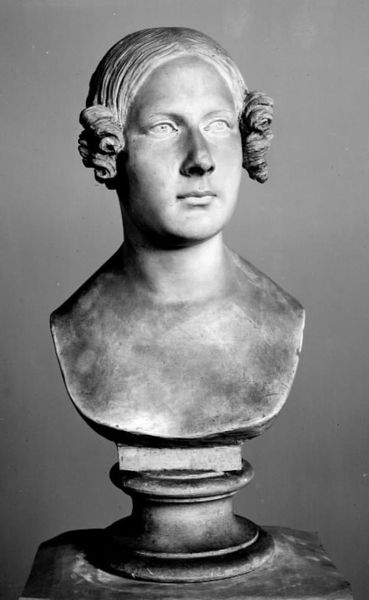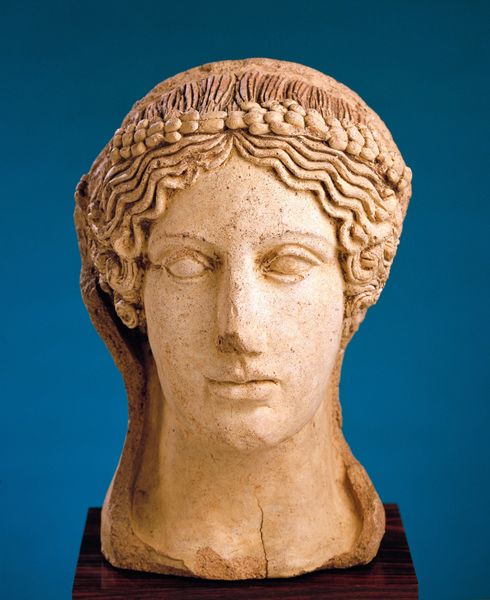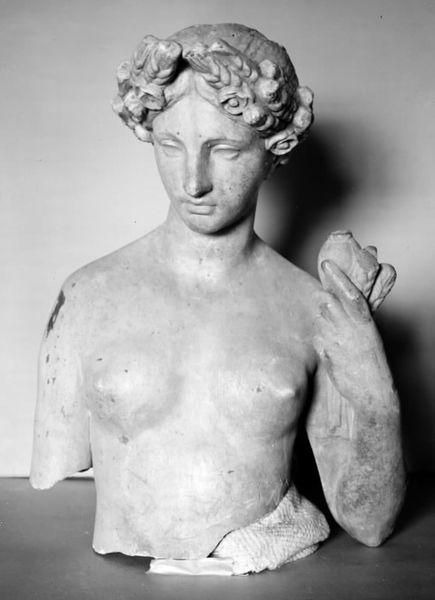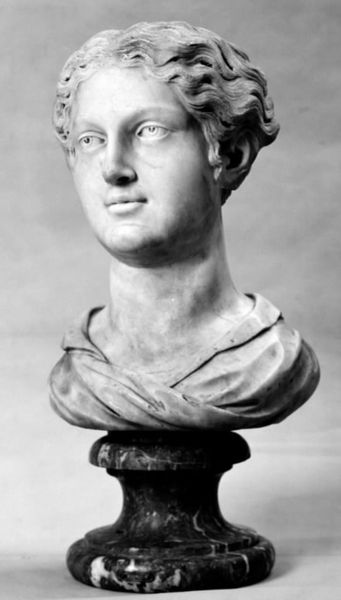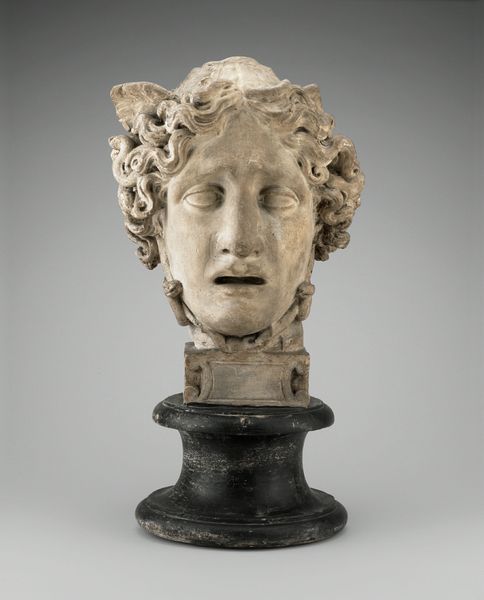
sculpture, marble
#
portrait
#
head
#
sculpture
#
11_renaissance
#
sculpture
#
marble
Dimensions: 12.3 cm (height) x 7.1 cm (width) x 7.5 cm (depth) (Netto)
Curator: Welcome. Here we have "Kvindehoved," or "Woman's Head," a 16th-century marble sculpture, currently residing at the SMK, Statens Museum for Kunst. Editor: The immediate impression is one of serenity. Her closed eyes and slight smile give her a composed expression, yet those cracks running down her face suggest a kind of vulnerability and fractured narrative. Curator: Indeed. Let's consider the classical influences at play here. The meticulous rendering of the curls, the idealized features...it aligns with Renaissance ideals of beauty, echoing antique models but with the aesthetic codes that denote status in 16th century dress. Editor: And speaking of context, what do we know about who this woman was? Given that it is anonymous and the name translates to “Woman’s Head," I find that erasing individual identity reinforces the idea that women’s significance was linked to broader concepts of beauty rather than who she was. Curator: That's a compelling interpretation. Looking at the technical aspects, notice how the sculptor achieves depth and texture solely through the manipulation of light and shadow. There's a sophisticated understanding of form, almost mathematical precision in the placement of each curve and plane. Editor: But what is not depicted is crucial to note as well, especially for a sculpture that is, by definition, detached. Her shoulders are cut off bluntly at the neck and given a non-descript, circular platform for display, signifying how, then as now, women are placed on pedestals. What's gained, and what is lost, through that idealization? Curator: These cracks and imperfections, that run down its middle, almost threaten to subvert the overall aesthetic harmony. Is it just damage or an intentional comment by its artist to suggest it needs more than a ‘fixing-up’? Editor: These physical scars add so much more to a contemporary interpretation that values authenticity, history, and the endurance of its own time. I want to know how that head made its way across centuries. Curator: So, ultimately, it exists as this nexus between flawless artistic construction of form, and the raw, enduring existence marked by time. It continues to spark a valuable conversation about aesthetics and historical meaning. Editor: And I love art that challenges us to reassess what beauty, endurance, and historical meaning even mean today.
Comments
No comments
Be the first to comment and join the conversation on the ultimate creative platform.
